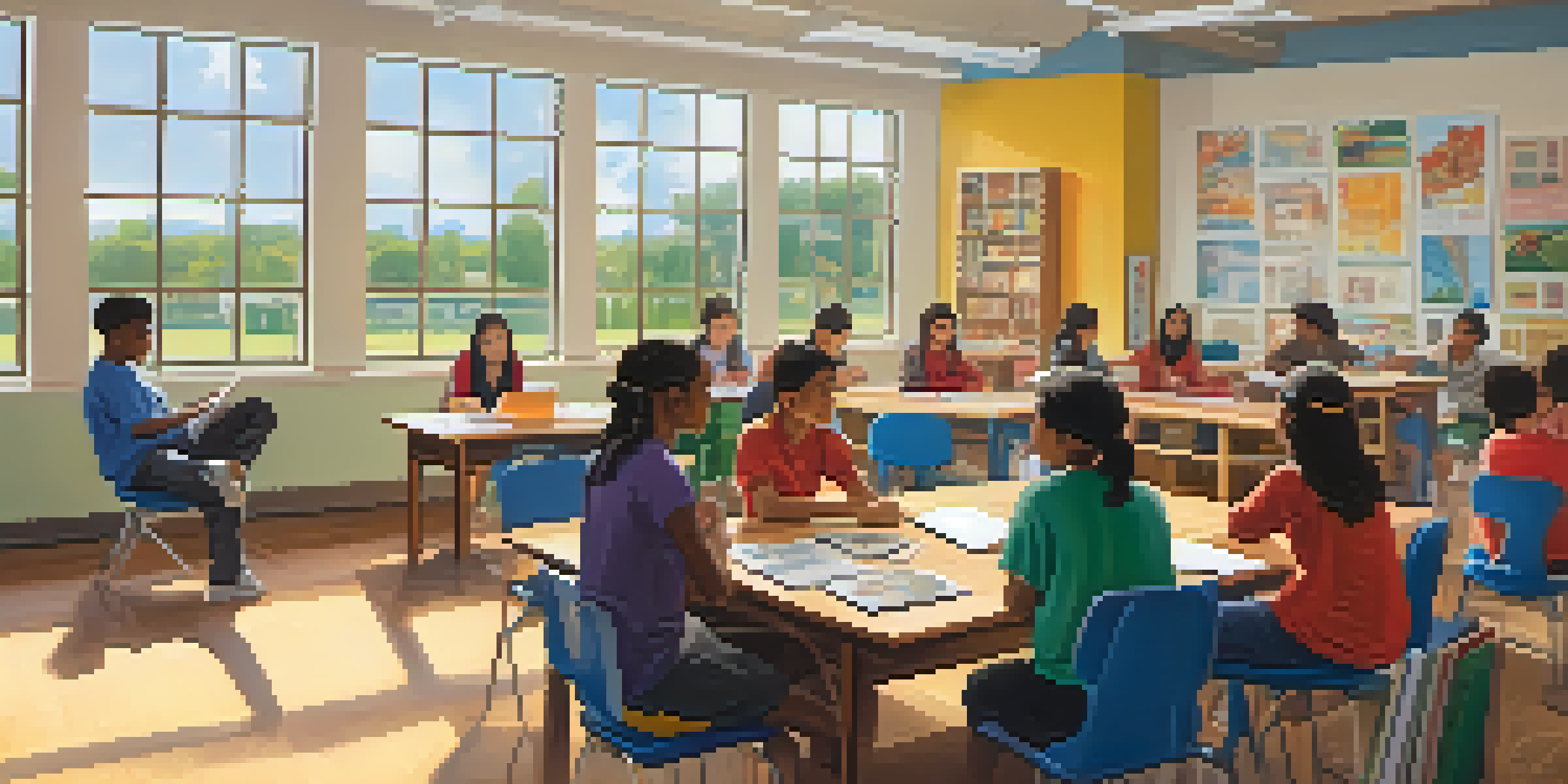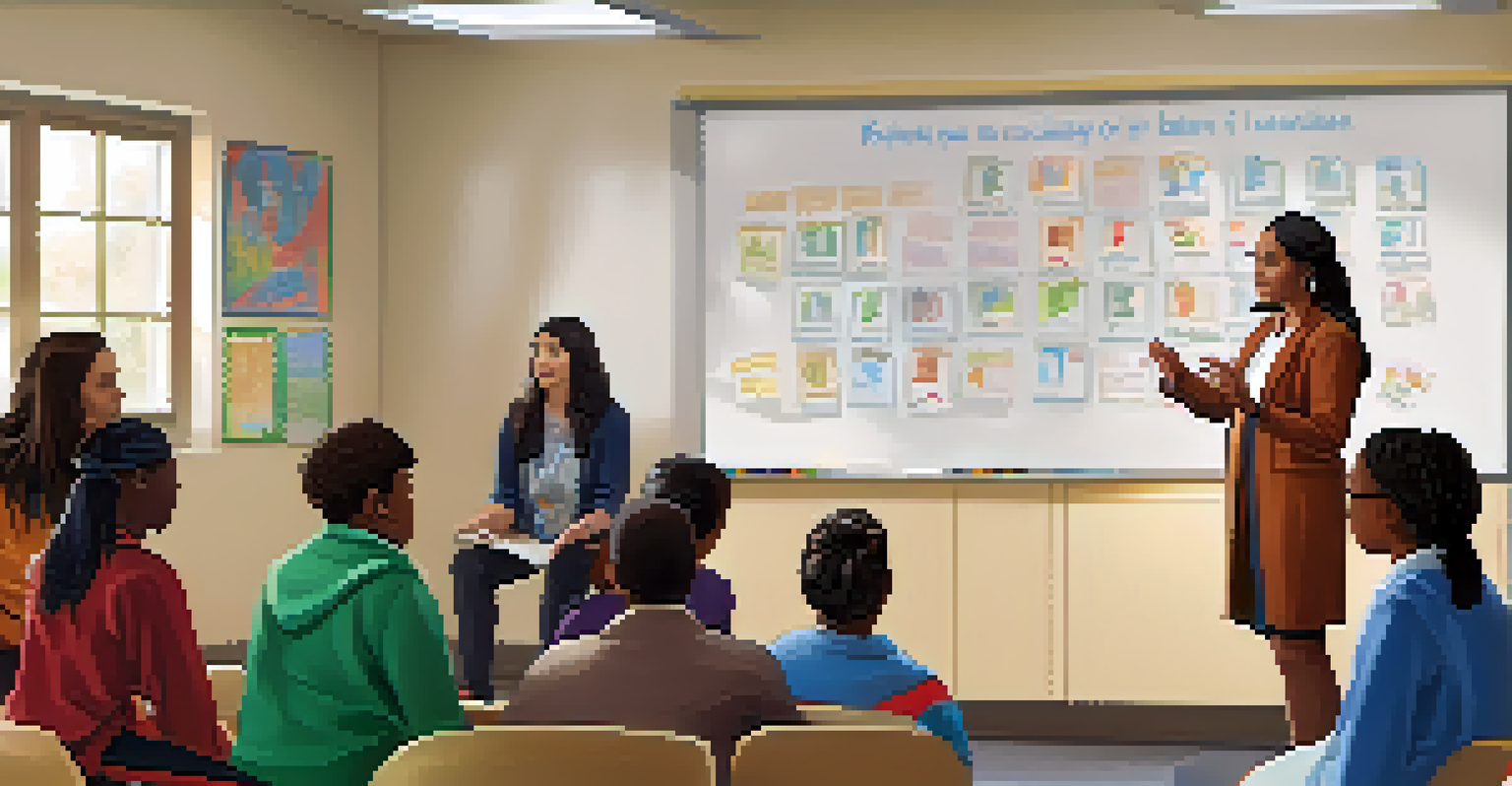Assessing Intercultural Competence in Educational Settings

Understanding Intercultural Competence in Education
Intercultural competence is the ability to communicate and interact effectively across cultures. In educational settings, this skill is essential as classrooms become increasingly diverse. Students who are interculturally competent can navigate differences in values, beliefs, and communication styles, which enriches the learning environment.
The ability to communicate effectively across cultures is essential for success in today’s globalized world.
Think of intercultural competence as a bridge connecting diverse perspectives. Just like a bridge allows people from different shores to meet, intercultural skills help students engage with peers from various backgrounds. This not only fosters respect and understanding but also enhances collaborative learning experiences.
Assessing this competence in students is crucial for educators, as it helps identify areas for improvement. By understanding the levels of intercultural competence, instructors can tailor their teaching methods and materials to better prepare students for a global society.
Why Assess Intercultural Competence?
Assessing intercultural competence is vital for creating inclusive educational environments. It helps educators understand the strengths and weaknesses of their students, which can lead to more effective teaching strategies. Without this assessment, some students may feel marginalized or misunderstood, hindering their academic success.

Imagine a classroom where everyone feels valued and included. By assessing intercultural competence, educators can pinpoint areas where students may struggle with cultural differences, thus facilitating a more supportive atmosphere. This proactive approach can lead to improved student engagement and participation.
Importance of Intercultural Competence
Intercultural competence is essential in education as it enables students to communicate effectively in diverse classrooms.
Moreover, assessment can guide curriculum development. By highlighting the intercultural competencies students lack, educators can introduce targeted programs that address these gaps, ultimately preparing students for the diverse world beyond the classroom.
Methods for Assessing Intercultural Competence
There are various methods available for assessing intercultural competence, including self-assessments, peer assessments, and observational techniques. Self-assessments encourage students to reflect on their own cultural awareness and adaptability, while peer assessments can provide valuable insight into how students perceive each other's intercultural skills.
Diversity is not a reason for division; it is a reason for connection.
For example, role-playing scenarios can be an engaging way to observe students in intercultural interactions. Educators can assess how well students navigate cultural differences in real-time, providing immediate feedback and fostering development. This experiential learning approach often leads to deeper understanding and retention of intercultural skills.
Additionally, surveys and questionnaires can be utilized to gauge students' attitudes towards cultural diversity. These tools can help identify trends and patterns, offering educators a clearer picture of their students' intercultural capabilities.
Creating a Supportive Environment for Assessment
To accurately assess intercultural competence, it’s essential to create a safe and supportive environment. Students should feel comfortable discussing their cultural backgrounds and experiences without fear of judgment. This openness encourages honest reflection and meaningful conversations about cultural differences.
Consider establishing ground rules for discussions that promote respect and understanding. Just as a safe space is crucial for sensitive topics, fostering an inclusive environment allows students to express their thoughts freely. This mutual respect can significantly enhance the assessment process.
Methods for Effective Assessment
Utilizing self-assessments, peer evaluations, and observational techniques helps educators gauge students' intercultural skills.
Moreover, incorporating diverse teaching materials that reflect various cultures can enrich the assessment experience. By exposing students to a range of perspectives, educators not only assess intercultural competence but also actively promote it.
Integrating Intercultural Competence in Curriculum
Incorporating intercultural competence into the curriculum can enhance assessment outcomes. This integration can take the form of collaborative projects, cultural exchange programs, or discussions on global issues. By embedding these elements into everyday learning, educators can create opportunities for students to practice their intercultural skills.
For instance, a project on global citizenship could encourage students to work together, researching different cultures and presenting their findings. This hands-on approach not only assesses their competence but also fosters a sense of community and teamwork. It’s like planting seeds in a garden; with proper care, those seeds grow into a diverse array of plants, each contributing to the garden's beauty.
Additionally, regular reflection on these experiences can deepen understanding. Encouraging students to journal about their intercultural interactions allows them to process their experiences and identify areas for growth.
Evaluating Assessment Outcomes
Once assessment methods are implemented, evaluating the outcomes is crucial. This evaluation helps educators determine the effectiveness of their strategies and whether students are developing the necessary intercultural skills. Regular reviews can lead to adjustments in teaching methods and assessment practices to better meet student needs.
Think of this evaluation as a feedback loop; it provides insights that help educators refine their approach. Just as a mechanic uses diagnostic tools to ensure a car runs smoothly, educators can use assessment outcomes to ensure their students are gaining intercultural competence effectively.
Future of Education and Diversity
As global interconnectivity increases, prioritizing intercultural competence in education will prepare students for success in a diverse world.
Moreover, sharing these outcomes with students can motivate them to take charge of their learning. When students see their progress, they are more likely to engage in self-improvement and set personal goals for their intercultural development.
The Future of Intercultural Competence in Education
Looking ahead, the need for intercultural competence in education will only grow. As our world becomes more interconnected, equipping students with these skills is essential for their success in both academic and professional realms. Educators play a pivotal role in this preparation, guiding students towards becoming effective global citizens.
Envision a future where students navigate cultural complexities with ease and confidence. By prioritizing intercultural competence in educational settings, we can foster a generation that values diversity and promotes understanding. This change starts in the classroom, impacting not just individual students but society as a whole.

Ultimately, the journey towards enhancing intercultural competence is ongoing. Continuous assessment, reflection, and curriculum integration will ensure that students are not only prepared for the challenges of a diverse world but also empowered to contribute positively to it.